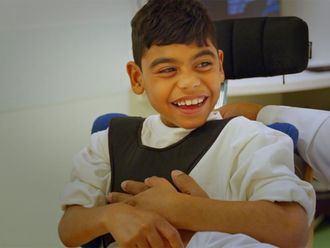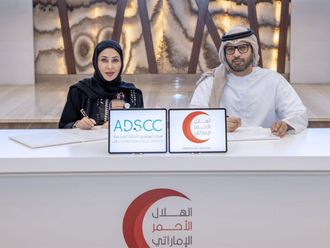Abu Dhabi: An eye condition known as keratoconus that distorts vision by changing the shape of the eyeball seems to be much more prevalent in youth in the Gulf, a top eye specialist said in the capital.
While this could be a result of a combination of factors, including genetic influences and the Gulf’s hot, dusty climate, there is still very little awareness of this ophthalmological illness that could even necessitate corrective surgery, Dr Robert Scott, from Dubai-based Moorfields Eye Hospital, said.
“In the rest of the world, keratoconus, which mainly affects young people below the age of 30 years, is seen in one in 2,000 patients. In the Gulf, this incidence is nearly double,” Dr Scott told Gulf News.
“Many patients however do not know that their condition can be treated, either with specialised contact lens or through a transplant of the cornea [transparent front layer of the eye],” he added.
Dr Scott said researchers at Moorfields are also currently looking at understanding the prevalence of keratoconus in the UAE and the Gulf.
He was speaking ahead of the launch this weekend of the Moorfields Eye Hospital Centre in Abu Dhabi. Officials said the centre had been planned as 20 per cent of the patients that visit the Moorfields facility in Dubai reside in Abu Dhabi.
The Abu Dhabi facility is being established collaboratively by the 200-year old ophthalmic facility in the United Kingdom, the Moorfields Eye Hospital NHS Foundation Trust, and Abu Dhabi-based health-care provider, United Eastern Medical Services. It is located in Marina Village and will be able to accommodate 120 patients daily, providing basic screenings as well as complex surgeries.
The facility was inaugurated by Shaikh Nahyan Bin Mubarak Al Nahyan, Minister for Culture, Youth and Community Development, in the presence of a number of dignitaries, including Alistair Burt, UK Minister of State for Health.
“Almost 300 million people around the world have some kind of visual impairment. Countries must promote eye health and raise awareness of the importance of prevention and control of so many ophthalmic disorders which, unfortunately, have significant human and socioeconomic consequences to society,” Burt said at the inauguration of the centre.
Another common eye-related illness that requires special care in the UAE is diabetic retinopathy, an ophthalmic complication that damages blood vessels in the retina, the light-sensitive tissue at the back of the eye. The condition is common in people who have been suffering from diabetes for seven to 10 years. Given that 19 per cent of the adult population suffers from diabetes in the UAE, Dr Scott said he expected to see many diabetes-related eye conditions at the Abu Dhabi centre.
“After all, nearly 50 per cent of the surgical procedures we undertake in Dubai are for patients suffering from diabetic retinopathy,” Dr Scott said.












